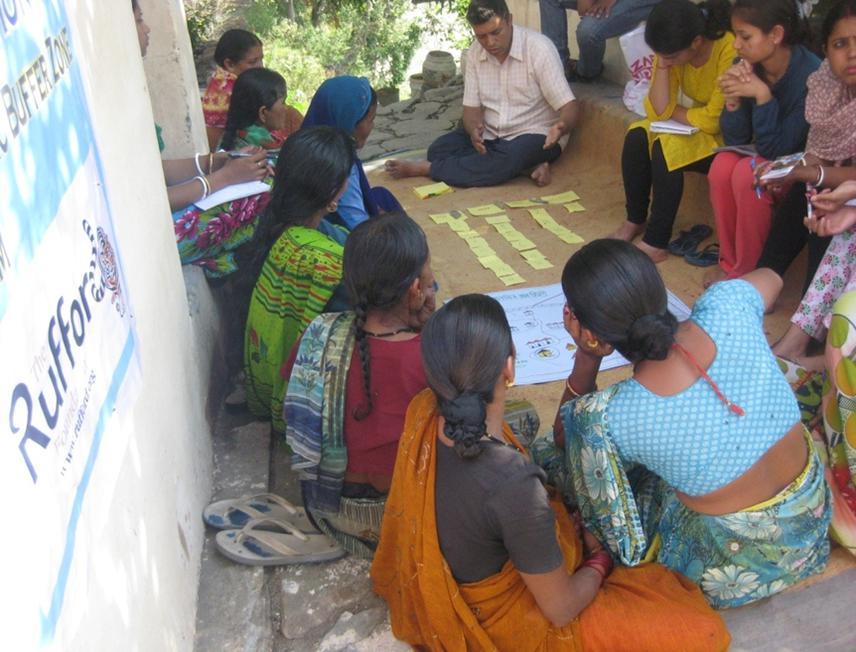Shankar Datt
Other projects
17 Jan 2017
Biodiversity Conservation (Tor putitora or Golden fish): A Case for Indigenous Community-Centric Buffer Zone Management Program Follow- up and Scale-Up
Develop a platform that adores the traditional knowledge for maintenance of harmony between humans and the flora and fauna.

Single outlet stone-mud barrier to catch fish ‘goda”.
Buffer zone of Corbett National Park is a very important land from biodiversity point of view. It is the area between many small rivers such as Ramganga, Koshi, Badangadh etc and is home of many disappearing plant and animal species. As per local communities observation they used to see good population of animal species including Tiger ,leopard cat, Spotted deer, Hog deer, Barking deer, wild boar, black beer, Indian porcupine, Common Krait, python, Jungle fowl, Vulture, Woodpeckers etc. as per scientific literature more than 50 Mammals and 580 birds species reported in the area.
Until 1990, about 85% of the population was involved in agriculture and was dependant on local resources. Many local institutions such as ‘Van panchayat’ (Forest council), Yuva mangal dal’, ‘mahila mangal dal’ etc were very strong and worked in synergy with the government towards the common goal of forest and natural resource conservation. Chipko movement was also a result of such strong and dedicated institution based approach towards forest conservation.
Economic liberalization brought about sudden change in the livelihood dependency have led to Mass migration of the local youth towards the cities and decreasing interest towards agriculture. As a result of this demographic and socio-economic shift the institution based system has weakened and the biodiversity and natural resource conservation programs are suffering from poor results. Nowadays, buffer zone of Corbett National Park is becoming notorious for hunting and smuggling activities. Not only outsider but also local youth are involved in the activities. For instance, Fishermen use electric current to kill fish illegally in Ramganga. Though they are interested in only one species Mahseer (Hypselobarbus micropogon), this indiscriminate method kills all water fauna in the region. In another instance, forest area is burnt down strategically during the summers and the land is encroached upon for illegal hunting and smuggling. We are sure that such practices cannot exist without the support of locals. We believe that only a structured and procedural approach will help in making the biodiversity and natural resource conservation practices a part of business practices. Through our project, we want to increase awareness against such practices and for this we have incorporated a constructive capacity building approach to help the locals. We believe that our proposed project and our inclusive approach will really go a long way in developing a culture aimed towards conservation of the biodiversity and local natural resources.